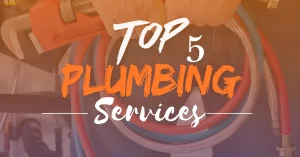The Ultimate SEO Checklist for Local Contractors in 2025: Why It’s a Game-Changer
Okay so let me be straight with you – I’ve been creating SEO Checklist for Local Contractors and helping across California for years now, and the ones who are absolutely crushing it have one thing in common: they’ve figured out SEO for local contractors. It’s not just about having a fancy website anymore.
I remember chatting with a plumber in San Diego last year who was spending £3,000 a month on Google Ads and barely breaking even. Fast forward six months after implementing proper local SEO, and he’s getting more calls than he can handle without spending a penny on ads. That’s the power of showing up when people search for “emergency plumber near me” at 2 AM.
The competition in California is mental – whether you’re in LA, the Bay Area, or Sacramento, every contractor and their competitor is fighting for the same customers.
This checklist isn’t theoretical rubbish – it’s what actually works. I’ve seen roofers go from page 3 to the top of Google, and HVAC contractors book out months in advance just by following these steps properly.
Read More: The Real Truth About Garage Door SEO: What Actually Works (And What Doesn’t) in 2025
-
Claim and Optimize Your Google Business Profile in Your SEO Checklist for Local Contractors
This is where most contractors mess up, and honestly, it drives me mad because it’s so simple yet so crucial. Your Google Business Profile (GBP) is like your digital shopfront – if it looks rubbish, people won’t trust you.
First things first: claim your profile if you haven’t already. Use your actual business phone number, not your mobile (unless that’s genuinely your business line). Google’s quite clever about detecting inconsistencies, so don’t try to be sneaky with PO boxes – use your real address.
Here’s what I always tell my clients: fill out every single field. I mean everything – services, business hours, service areas, attributes. It might seem tedious, but Google rewards completeness. Add your logo, team photos, and loads of before/after shots. I’ve noticed that profiles with 20+ photos get significantly more clicks than those with just a few.
The posting feature is gold for local SEO California visibility. Share weekly updates, special offers, or even just photos of your latest project. It keeps your profile active and shows Google you’re not a dead business. One electrician I work with posts every Tuesday about electrical safety tips – simple stuff, but it works.
Customer reviews are your lifeline. Encourage them, but do it properly. Send follow-up texts after jobs, not pushy emails. When you get reviews (good or bad), respond professionally. I’ve seen contractors turn negative reviews into positive outcomes just by handling them well.
-
Master On-Page SEO for Your Website in the SEO Checklist for Local Contractors
Your page titles and meta descriptions need to include local keywords naturally. Instead of “Home Repairs,” try “Kitchen Remodel Contractor in Sacramento” – it’s more specific and catches local searches. Each service page should target one specific service plus location combo.
Mobile optimisation isn’t optional anymore – most of your customers are searching on their phones whilst standing in their flooded kitchen or looking at their broken boiler. If your site loads slowly or looks terrible on mobile, you’ve lost them.
I always recommend adding structured data markup for Local Business and Services.
-
Nail Local Keyword Research & Content in Your SEO Checklist for Local Contractors
This is where the magic happens with SEO tips for home service businesses. You need to think like your customers, not like a contractor. They’re not searching for “residential plumbing services” – they’re typing “toilet won’t flush” or “water heater making weird noise.”
I use tools like Google Keyword Planner (it’s free) and Uber suggest to find what people are actually searching for. The golden keywords are usually:
- “bathroom re-modellers in Pasadena”
- “best HVAC repair Anaheim”
- “licensed electricians in Fresno”
- “emergency roof repair near me”
Create content around these searches. Write blog posts about common problems you solve, share case studies from recent projects, or create guides that help homeowners understand when to call a professional versus DIY.
I worked with a roofer who started writing about “signs your roof needs replacing” and similar topics. Within three months, he was ranking for dozens of local searches and getting calls from people who found his helpful articles. The content doesn’t need to be Shakespeare – just useful and honest.
Local project showcases work brilliantly too. Write about that kitchen renovation you did in Beverly Hills or the electrical work in Thousand Oaks. Include photos, mention the local area, and describe the challenges you solved. It’s natural local content that Google loves.
-
Forge Local Citations & Directory Listings in Your SEO Checklist for Local Contractors
Right, this bit is proper boring but absolutely essential. Your NAP (Name, Address, Phone) data needs to be identical everywhere online. I mean exactly the same – if you use “Street” on your Google profile, don’t use “St” on Yelp.
Get listed on the major platforms: Yelp, Better Business Bureau, Angi, Houzz, Build Zoom, Thumbtack, and Yellow Pages. It’s tedious work, but it builds trust signals that Google uses to verify you’re a real business.
I always tell contractors to check their local chamber of commerce websites and industry-specific directories. California has licensing boards for different trades – get listed there if possible. These .gov and .org links carry more weight with Google.
Watch out for duplicate listings – I’ve seen businesses with three different Yelp profiles because someone created extras by mistake. It confuses Google and dilutes your authority. Clean up any duplicates you find.
The consistency thing is crucial. I’ve seen contractors lose rankings because they moved offices and didn’t update their address everywhere. Set aside a few hours to audit all your listings quarterly – it’s worth it.
-
Secure Quality Backlinks from Local Sources in Your SEO Checklist for Local Contractors
Backlinks are like votes of confidence from other websites. But not all votes are equal – a link from your local chamber of commerce website is worth more than a link from some random blog in another country.
I always suggest starting with your existing relationships. Do you buy materials from local suppliers? Ask if they’ll add your business to their contractor directory. Sponsor a local little league team or community event – these often come with website mentions.
Partner with complementary businesses. If you’re a plumber, team up with local electricians or general contractors. Cross-refer customers and link to each other’s websites. It’s natural and helpful for everyone involved.
Guest posting can work, but be selective. Write for local home improvement blogs, community websites, or even local newspapers with online presence. Share your expertise, don’t just promote your services.
Avoid those dodgy link-building services that promise 100 backlinks for £50. Google’s smart enough to spot these mile away, and they’ll actually hurt your rankings. Quality over quantity, always.
-
Leverage Location Pages for Multi-City Domination in Your SEO Checklist for Local Contractors
If you serve multiple cities (and most California contractors do), don’t just list them all on your homepage. Create dedicated landing pages for each location you serve.
Each location page should feel unique and valuable. Include local testimonials, photos of projects in that area, and specific services you offer there. Mention local landmarks, neighbourhoods, or even local challenges (like earthquake retrofitting in certain areas).
I worked with an HVAC contractor who created separate pages for each city he served in Orange County. Each page had local project photos, customer reviews from that area, and even mentioned local building codes. His “near me” search visibility increased dramatically.
Embed a Google Map showing your service area for each location. Internal linking between location pages helps too – create a natural web of related content that keeps visitors engaged.
Don’t create thin, duplicate content though. Each page needs to offer genuine value. If you can’t write 300+ unique words about serving that location, you might not be serving it properly.
-
Track and Tweak with SEO Tools in Your SEO Checklist for Local Contractors
I used to rely on gut feelings—terrible strategy. Now I use Google Analytics and Google Search Console to track exactly what’s working. Here’s a quick tip—adding FAQs with schema markup has been huge for my visibility. Customer video testimonials embedded from YouTube also built trust fast.
Conclusion: Level Up with This SEO Checklist for Local Contractors
This contractor SEO checklist isn’t complicated; it’s practical. It helped me outrank bigger competitors and get the leads I actually wanted. Every little detail matters—from your Google profile to backlinks and local pages.







